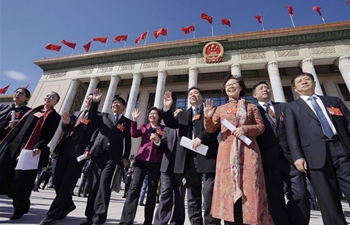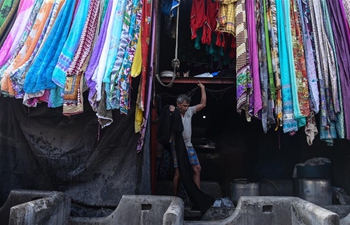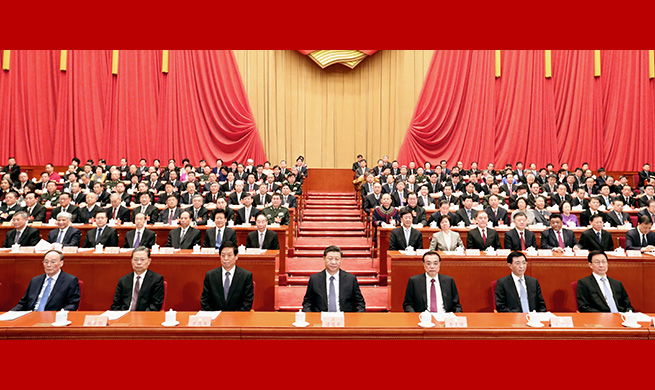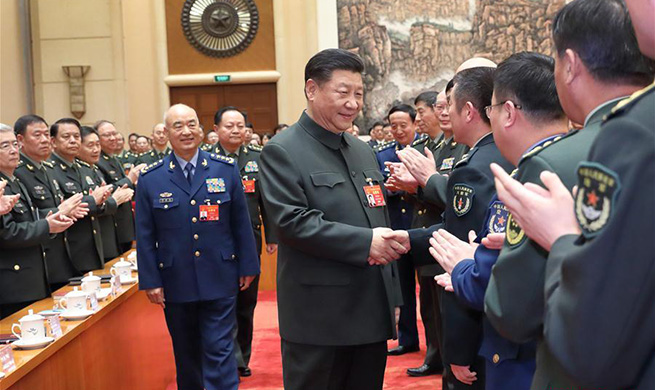TIANJIN, March 14 (Xinhua) -- In a small workshop, 68-year-old Liang Yuhua meticulously measures a young lady for her wedding dress, a tailor-made Qipao, or cheongsam which was once part of many Chinese women's daily wardrobes.
The dressmaker's workshop is adorned with elegant collars and figure-fitting dresses, from delicate long embroidered silk Qipaos to shorter length versions for casual occasions.
"A tailor-made Qipao requires more than 200 steps. One careless mistake may seriously affect the progress," she said, adding that measuring the customer is the first step and key to the dressmaking.
Born in 1951, Liang has over four decades of experience in creating the classic Qipao in north China's coastal municipality Tianjin where modernity meets tradition.
Tianjin's Qipao is usually designed with gorgeous colors and more wearable materials, compared with the Shanghai-style, another popular Qipao design in the country, said Liang, an inheritor of the Tianjin-style Qipao, listed as an intangible cultural heritage.
"For example, we design dresses with low-necks and round collars, as well as warm and wearable hemlines for daily wear," Liang added.
Liang started her career in the garment business as a seamstress at 20. The first three years of apprenticing laid the foundation for her sophisticated craftsmanship.
"I began as an assistant of senior masters at a garment factory in Tianjin for years and managed to learn their skills," Liang said.
Tianjin's booming clothes market in the 1980s triggered large orders in the factory that Liang worked for, offering her a great opportunity to learn from all the practice.
But during the 1990s, the domestic garment industry stumbled towards a downturn due to a number of foreign fashion designs that entered the Chinese market and gained popularity.
"I chose to stay in the business even though my colleagues left for other professions," Liang said. "Sewing, cutting and designing have become part of my life."
In 2001, a group photo of leaders of relevant countries wearing Tang suits, a traditional Chinese suit, at an APEC meeting set off a wave of nationwide interest in traditional clothing. Liang then made up her mind to focus her efforts on making Qipaos.
Based on the first measurement of the client, Liang said the dress's silhouette is cut out of silk fabric and the dressmaker will then spend over a month finalizing the details.
Before the garment is completed, the customer is required to have several fittings to allow the dressmaker to correct the details through elaborate embroidering, sewing, hemming and ironing, among other steps, Liang said.
"It is extremely demanding to sew the semi-finished Qipao on the mannequin to ensure the dress perfectly fits the client," said Liang.
Liang worries that Qipao making skills are in danger of dying out, so she began to take on apprentices to pass down her know-how since 2007.
Liang also joined online courses to teach the younger generation the basic skills of making Qipao's accessories, such as its collars and buttonhole loops.
"Liang's decades-long work with Qipaos will not fade nor die," said Jiang Yan, a Qipao maker with eight years of experience tutoring under Liang. "I look up to her craftsmanship and will make it my lifelong career."

















